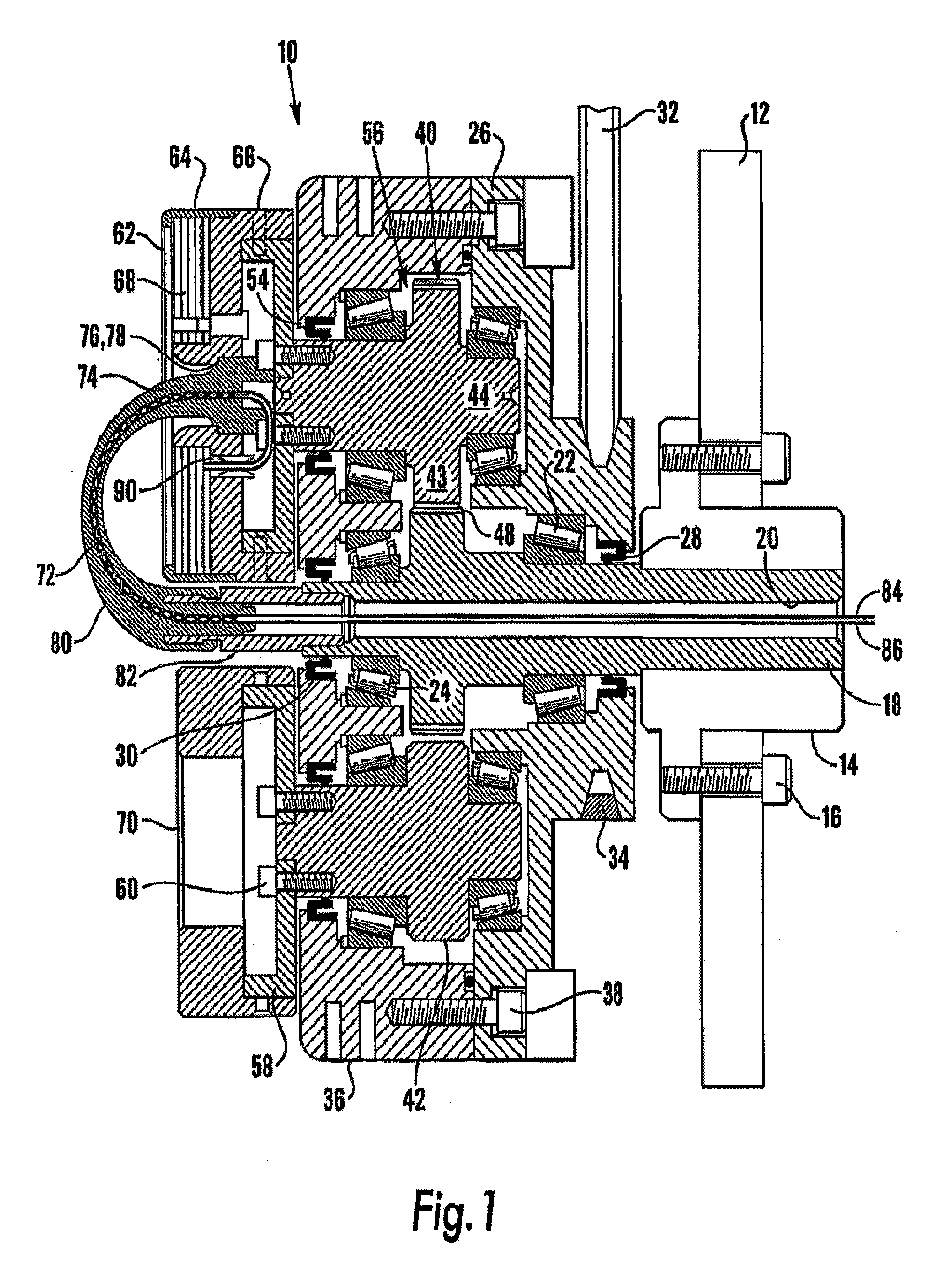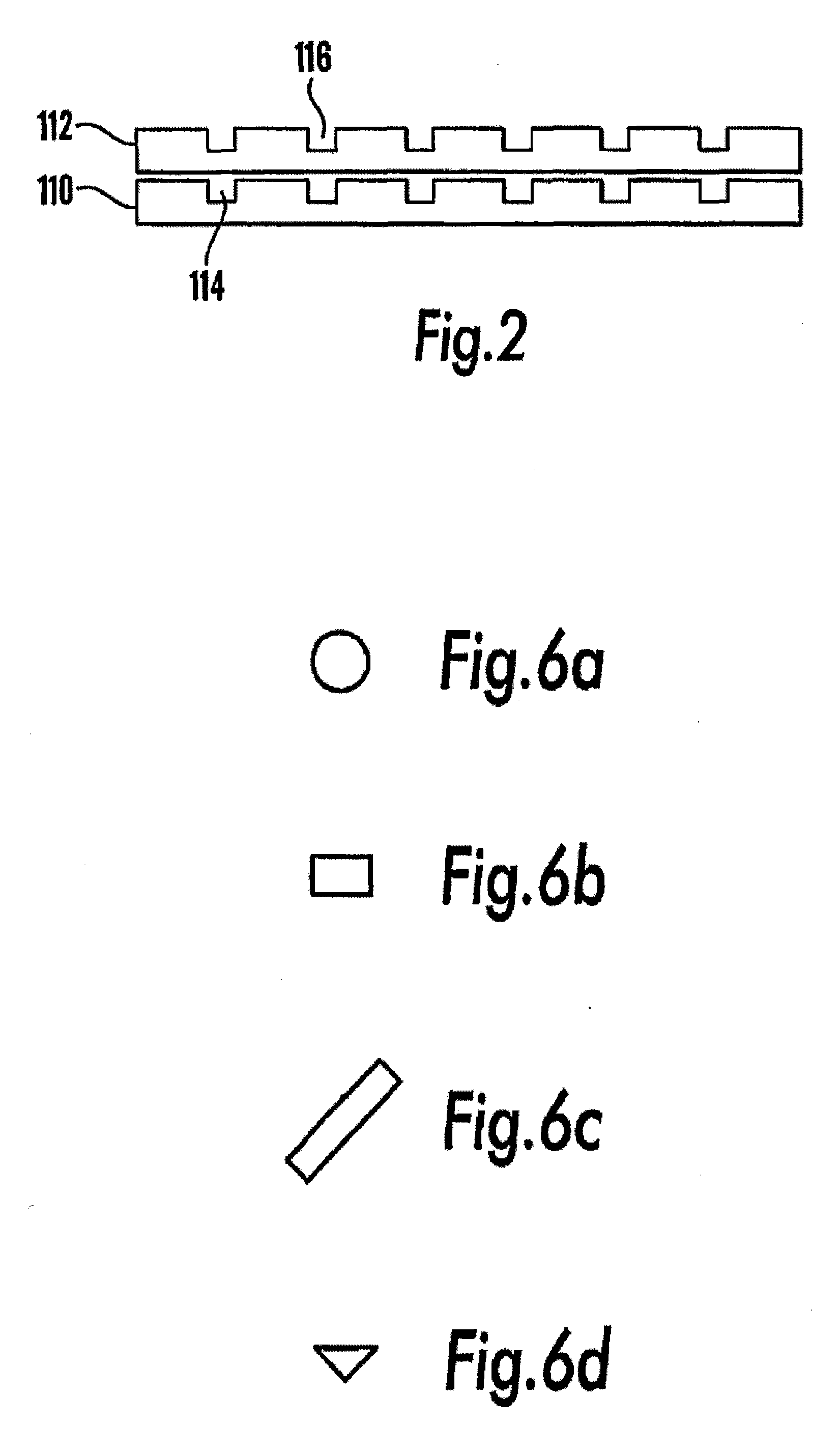Centrifuge
a centrifuge and centrifugal technology, applied in the field of centrifuges, can solve the problems of inability to interface directly to a mass spectrometer detector without using a splitter, the speed at which separation may be conducted, and the infancy of separation, so as to increase the number of mixing and settling cycles, the effect of high percentage stationary phase retention
- Summary
- Abstract
- Description
- Claims
- Application Information
AI Technical Summary
Benefits of technology
Problems solved by technology
Method used
Image
Examples
Embodiment Construction
[0039]Referring to FIG. 1, there is shown a preferred embodiment of a “J” type coil planet centrifuge 10 for counter current chromatography (CCC). The centrifuge 10 is intended to be suitable for use with small diameter coils, for example of 1 millimetre internal diameter or less, rotated at high speeds, for example in excess of 2000 rpm. Of course, the size of coil and rotational speeds can be chosen on the basis of the desired application.
[0040]The centrifuge 10 is typically kept in a casing (not shown) for protection purposes and for allowing control of environmental conditions such as temperature. Furthermore, in addition to the components shown in the Figure, the centrifuge 10 is provided with the other elements typical in apparatus of this type, such as power supplies, couplings to mass spectrometer equipment and so on, which will be immediately apparent to the skilled person and thus not described herein in detail.
[0041]The centrifuge 10 includes a support wall 12, in practic...
PUM
 Login to View More
Login to View More Abstract
Description
Claims
Application Information
 Login to View More
Login to View More - R&D
- Intellectual Property
- Life Sciences
- Materials
- Tech Scout
- Unparalleled Data Quality
- Higher Quality Content
- 60% Fewer Hallucinations
Browse by: Latest US Patents, China's latest patents, Technical Efficacy Thesaurus, Application Domain, Technology Topic, Popular Technical Reports.
© 2025 PatSnap. All rights reserved.Legal|Privacy policy|Modern Slavery Act Transparency Statement|Sitemap|About US| Contact US: help@patsnap.com



